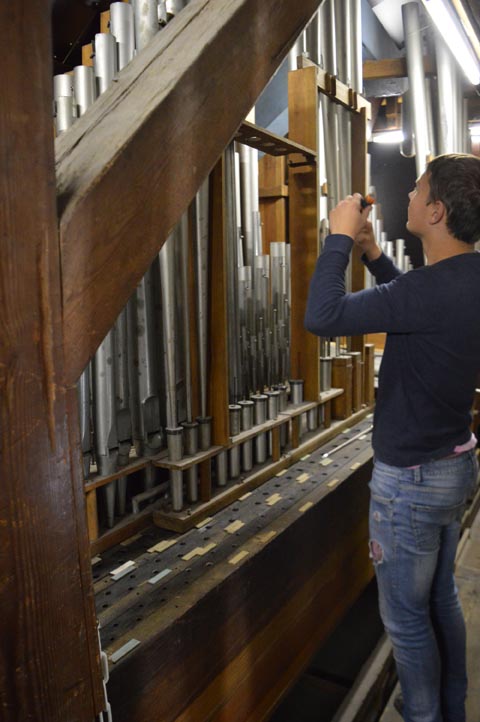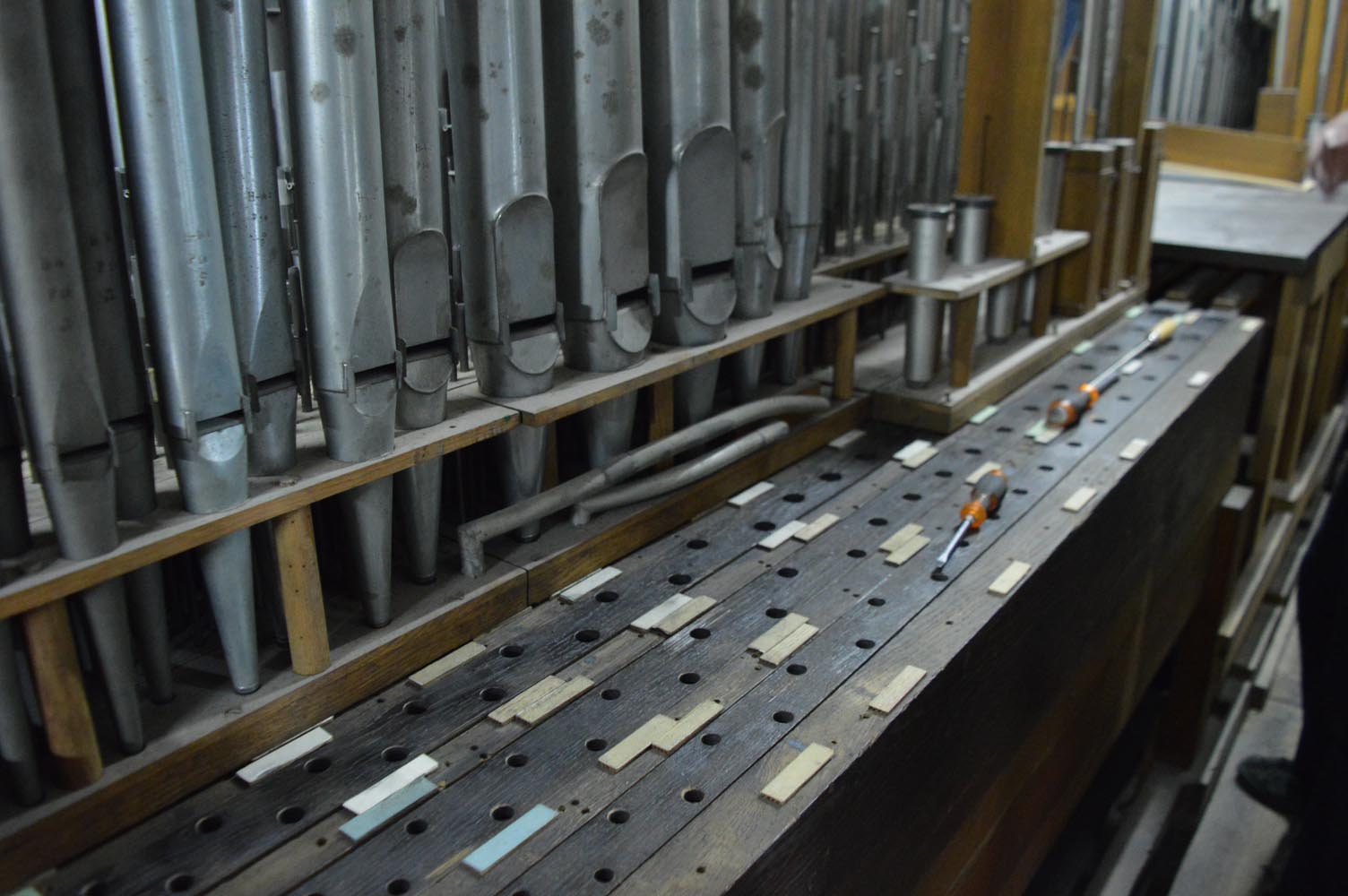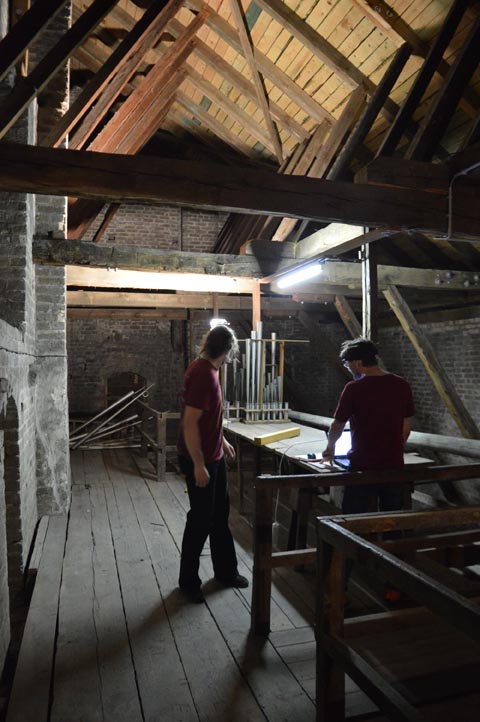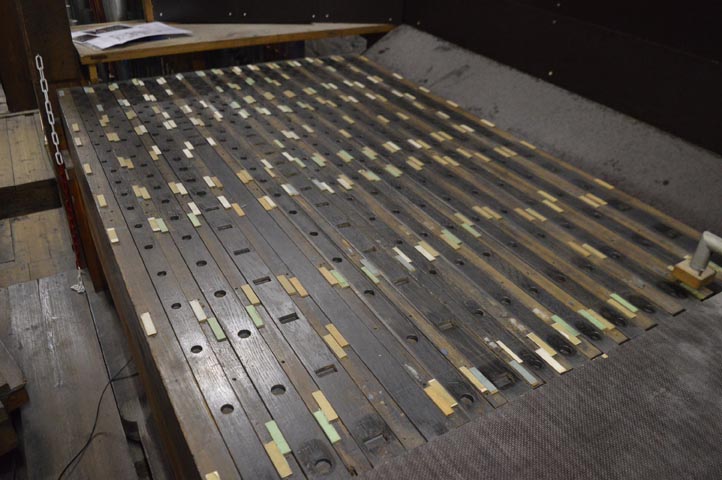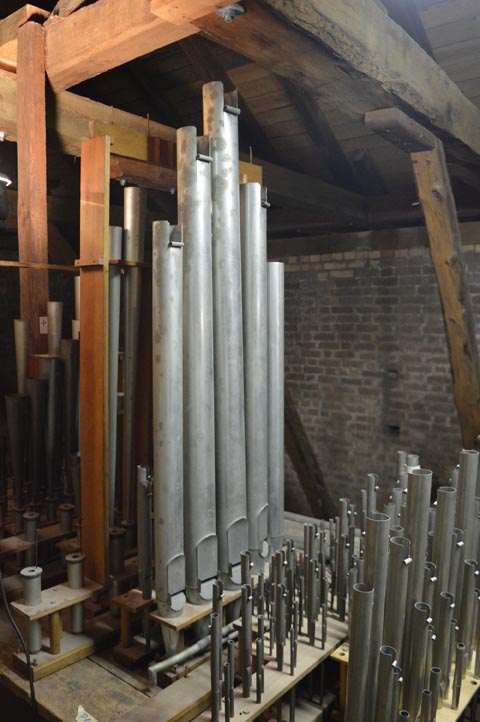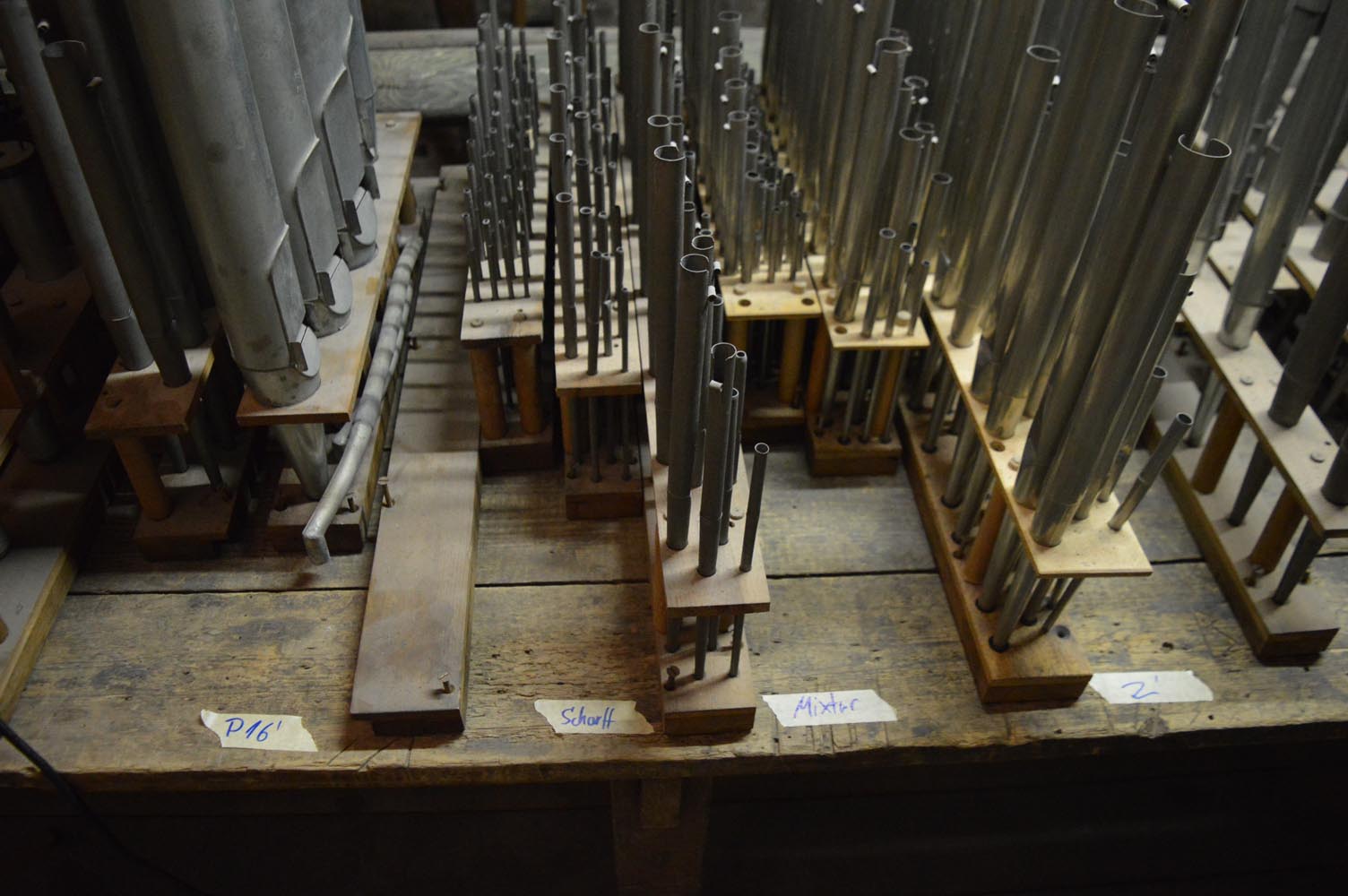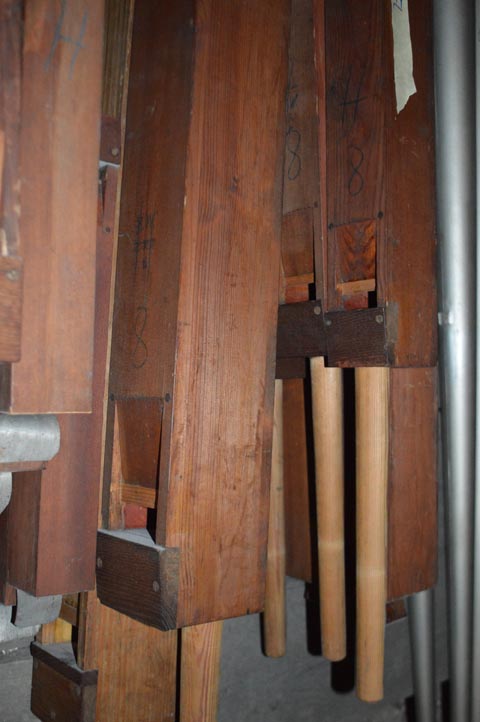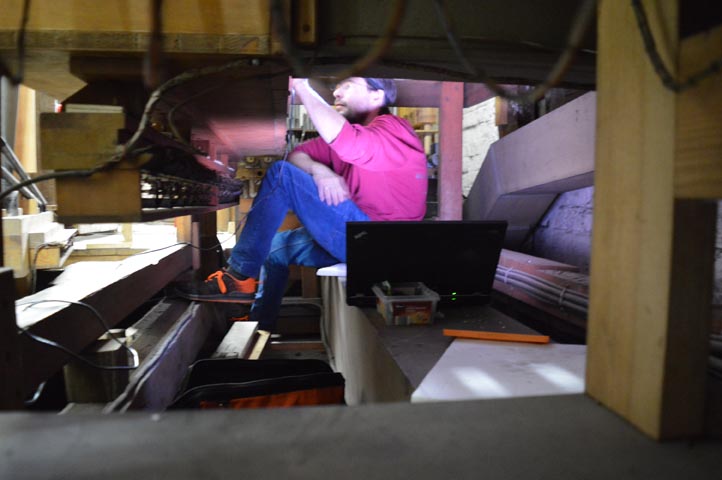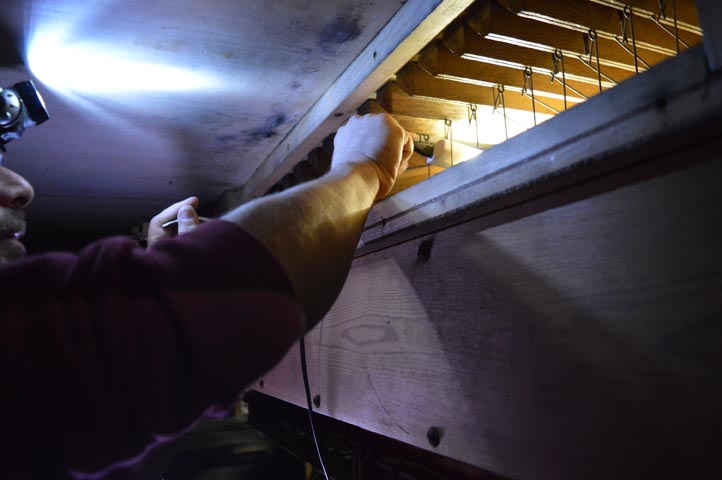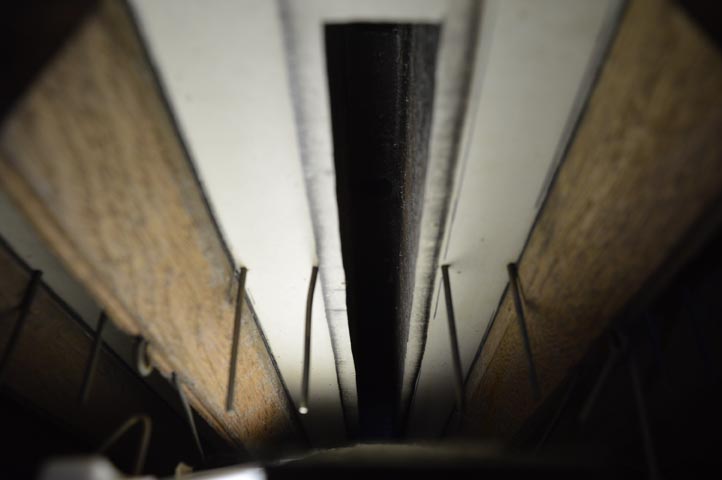Examination of Windchests from 1793
Several plans from the past (Klais 2000, Wegscheider 2009) where intended to give the organ a late baroque appearance, widely rendering the situation of 1793. But are the preserved windchests (Pedal, Manuals I, II, III by Marx, “Kronwerk” by Schmidt) capable of supporting new and better pipework? This has regularly questioned due to quite narrow dimensions of the channels and pallets. An exact investigation should shed light on these issues.
In October 2019, staff of Historische Tasteninstrumente Johann Gottfried Schmidt (the local organ builders) investigated the windchests of Man. II and III. The southern chests (D side – the C is placed on the northern chest, continuing with D#) got their pipework removed, and the channels and the boring diameters of D, c°, c’, c” and c”’ have been recorded.
Beside discovering several cracks within the chests it was found out that C side and D side hat identical spacing and that Man. II and III have similar chest dimensions. Some rough edges show that the drillings have been extended later after completion. Some mildew was detected, too. The pallets may be original.
Even though different methods do exist to calculate wind consumption within trunking, chests and pipes, J.-G. Schmidt stated that in the bass range the windchests have reached their limits, but on the treble end the capacity should allow for continued use with altered or new pipework. Such determinations depend on many facts (e. g. scaling and voicing of the pipes) and can’t be taken for granted.
During removal of the pipework, again it became visible how much the cut-ups of the pipes of Holzflöte 8′ on Man. II and Lieblich Gedeckt 16′ on Man. III, both probably built by Winzer around 1845, have been altered by lowering the upper lip to reduce power (and wind consumption). The Fugara 4′ (Man. III) was photographed for the first time and shows nice roller bars.


